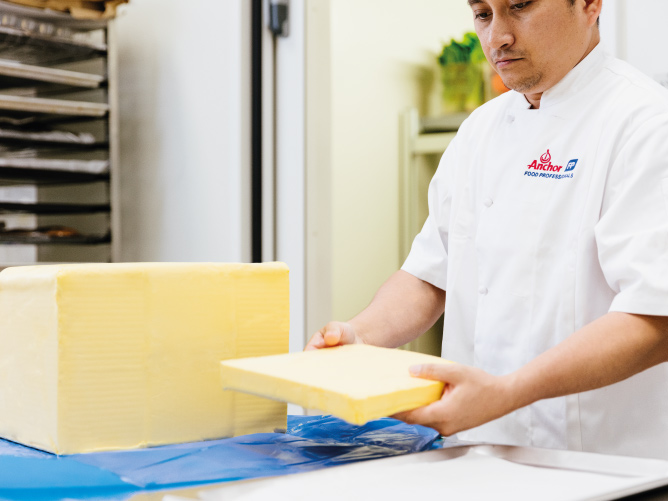Butter, Naturally Pure
Cafe
2 mins read
A meal that tastes good is just as important to your customers as one that’s good for them - and butter has a deliciously unique flavour that will easily elevate your menu.
Nothing beats butter
Butter’s mouthfeel is beautifully smooth with a creamy texture. And with its ideal melting properties, it gives sauces, such as a classic béarnaise or béchamel, a rich base for you to work with.
As well as enhancing the flavour of base ingredients like onion or garlic, butter’s an ideal addition in spicy dishes, too. Its flavour-carrying properties allow butter to absorb and evenly distribute a spice’s flavor.
Meanwhile, croissants or pastries are never better than when they’re made with pure butter. It’s that simple. Butter promises to give your baked goods impressive height and layers, while its moisture helps pastries stay fresh for longer.

Customers know natural is better
Customers are more food savvy than ever before – so it makes good business sense to choose ingredients as close to their natural state as possible. And butter is just a churn away from full cream cow’s milk!
But… not all butters are created equal! That’s because the quality of a butter is determined by the quality of the milk used to make it. With New Zealand’s temperate climate, cows graze on fresh pasture all year round, which results in a superior milk and a butter with a fuller, creamier flavor. Butter from pasture-fed cows also has more beta-carotene and vitamins than grain-fed cows, too, which is why New Zealand butter has a distinct colour – you can literally see the goodness in its signature yellow hue.
What’s in butter?
Nutritionally, butter is roughly 80 percent fat (mostly saturated), 12 percent water, 2 to 3 percent nonfat milk solids (lactose, protein), and 2 percent added salt. It’s also a valuable source of vitamin A, with a little vitamin D, too. The vitamin content is higher in butter made from cows that feed on fresh grass.